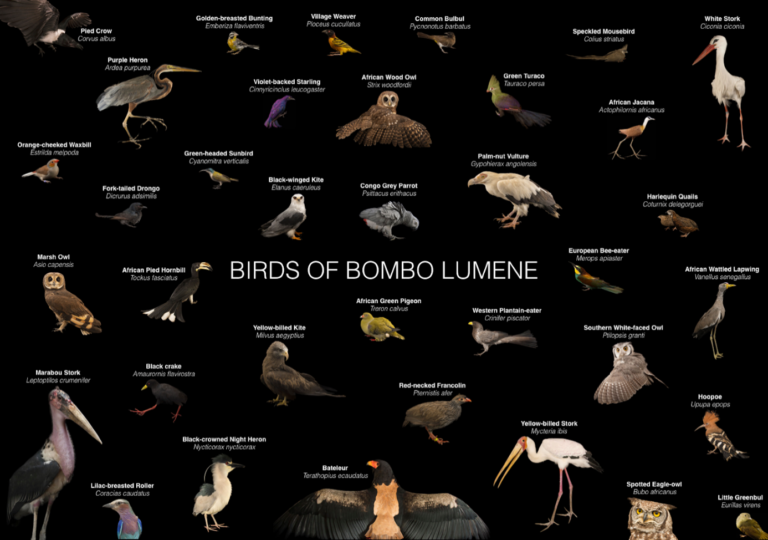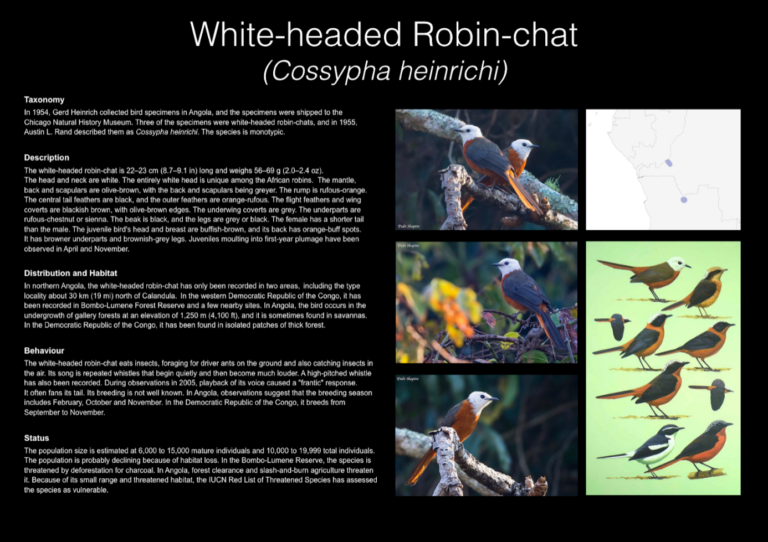fauna
Mammals
What makes Bombo Lumene unique is that it possesses a unique ecosystem made up of open and wooded savanna as well as thick tropical gallery forests. The combination of these two very different habitats means the reserve is home to both typical savanna species such as side-striped jackal, bush duiker, bushbuck, and malbrouck monkeys, and forest species such as forest buffalo, red river hogs, four species of forest duikers, white-bellied pangolins, red-tailed and southern talapoin monkeys and many more.
Historically, Bombo Lumene was home to large populations of megafauna such as elephant, lion, defassa waterbuck, southern reedbuck, hippopotamus, forest buffalo, and spotted hyena among others. However, intense hunting pressure has decimated these populations and led to the local extinction of many of these species including defassa waterbuck, elephants, lions, and spotted hyenas. Small populations of hippopotamuses survive in the Lufimi river, and a small population of forest buffalo can be found in the ‘domaine’ portion of Bombo Lumene, near the main camping area. Recently, there have been encouraging reports from local villagers that there are still southern reedbuck in the area which we hope to confirm with camera trap images very soon. Despite the local extinctions of some of these large animals, there still remains a wide variety of mammals to be seen.
Birds
Bombo Lumene is home to an incredibly rich and varied avifauna due to its unique ecosystem which contains open and wooded savanna, gallery forest, and marshes. This rapid alternation between different habitats means that visitors can spot both typical forest species as well as typical savanna species within the same day. In 2001 Birdlife International recognised and classified Bombo Lumene as an Important Bird Area (IBA). As of April 2021, over 255 bird species have been recorded in the reserve with many more species likely yet to be recorded.
fauna
Mammals
What makes Bombo Lumene unique is that it possesses a unique ecosystem made up of open and wooded savanna as well as thick tropical gallery forests. The combination of these two very different habitats means the reserve is home to both typical savanna species such as side-striped jackal, bush duiker, bushbuck, and malbrouck monkeys, and forest species such as forest buffalo, red river hogs, four species of forest duikers, white-bellied pangolins, red-tailed and southern talapoin monkeys and many more.
Historically, Bombo Lumene was home to large populations of megafauna such as elephant, lion, defassa waterbuck, southern reedbuck, hippopotamus, forest buffalo, and spotted hyena among others. However, intense hunting pressure has decimated these populations and led to the local extinction of many of these species including defassa waterbuck, elephants, lions, and spotted hyenas. Small populations of hippopotamuses survive in the Lufimi river, and a small population of forest buffalo can be found in the ‘domaine’ portion of Bombo Lumene, near the main camping area. Recently, there have been encouraging reports from local villagers that there are still southern reedbuck in the area which we hope to confirm with camera trap images very soon. Despite the local extinctions of some of these large animals, there still remains a wide variety of mammals to be seen.
Birds
Bombo Lumene is home to an incredibly rich and varied avifauna due to its unique ecosystem which contains open and wooded savanna, gallery forest, and marshes. This rapid alternation between different habitats means that visitors can spot both typical forest species as well as typical savanna species within the same day. In 2001 Birdlife International recognised and classified Bombo Lumene as an Important Bird Area (IBA). As of April 2021, over 255 bird species have been recorded in the reserve with many more species likely yet to be recorded.
fauna
Mammals
What makes Bombo Lumene unique is that it possesses a unique ecosystem made up of open and wooded savanna as well as thick tropical gallery forests. The combination of these two very different habitats means the reserve is home to both typical savanna species such as side-striped jackal, bush duiker, bushbuck, and malbrouck monkeys, and forest species such as forest buffalo, red river hogs, four species of forest duikers, white-bellied pangolins, red-tailed and southern talapoin monkeys and many more.
Historically, Bombo Lumene was home to large populations of megafauna such as elephant, lion, defassa waterbuck, southern reedbuck, hippopotamus, forest buffalo, and spotted hyena among others. However, intense hunting pressure has decimated these populations and led to the local extinction of many of these species including defassa waterbuck, elephants, lions, and spotted hyenas. Small populations of hippopotamuses survive in the Lufimi river, and a small population of forest buffalo can be found in the ‘domaine’ portion of Bombo Lumene, near the main camping area. Recently, there have been encouraging reports from local villagers that there are still southern reedbuck in the area which we hope to confirm with camera trap images very soon. Despite the local extinctions of some of these large animals, there still remains a wide variety of mammals to be seen.
Image: Some of the mammal species still found within Bombo Lumene. (photos from National Geographic PhotoArk)
Birds
Bombo Lumene is home to an incredibly rich and varied avifauna due to its unique ecosystem which contains open and wooded savanna, gallery forest, and marshes. This rapid alternation between different habitats means that visitors can spot both typical forest species as well as typical savanna species within the same day. In 2001 Birdlife International recognised and classified Bombo Lumene as an Important Bird Area (IBA). As of April 2021, over 255 bird species have been recorded in the reserve with many more species likely yet to be recorded.



